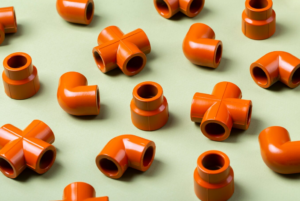
In the world of industrial piping, the choice of fittings plays a crucial role in ensuring the safety, durability, and efficiency of fluid transport systems. Among the various types available, butt-weld fittings stand out as one of the most reliable and widely used options in sectors like oil and gas, petrochemical, power generation, water treatment, and manufacturing industries.
Butt-weld fittings are specially designed to be welded directly to pipes, creating a seamless joint that can withstand demanding industrial conditions. This blog post dives into the top 7 advantages of using butt-weld fittings in industrial piping and why they are often the go-to solution for engineers and project managers.
- Superior Strength and Leak-Proof Connections
One of the primary advantages of butt-weld fittings is the strength of the welded joint. When two pipe ends and the fitting are welded together, the joint becomes as strong as the pipe itself. Unlike threaded or socket-weld fittings, there are no weak points created threads or seals that can loosen or degrade over time.
This creates a 100% leak-proof system, which is especially critical in industries handling hazardous fluids or gases under high pressure. The continuous metal-to-metal bond formed welding resists stresses caused vibration, thermal expansion, or pressure surges, making it ideal for heavy-duty applications.
- High Durability and Resistance to Harsh Conditions
Butt-weld fittings are designed to endure extreme conditions such as:
- High pressures
- Elevated or fluctuating temperatures
- Corrosive environments
- Mechanical stresses and impacts
Because of the welded connection and the often high-grade materials used (like stainless steel or alloy steel), these fittings maintain their integrity over long operational periods without failure. This durability ensures minimal downtime and maintenance costs, which is essential for industrial plants aiming for maximum productivity.
- Smooth Internal Flow with Minimal Pressure Loss
The internal surfaces of butt-weld fittings are smooth and continuous due to the welding process. This means there are no abrupt changes in the flow path, unlike fittings with threaded joints or flanged connections, which can cause turbulence.
The result is a streamlined flow of fluids or gases, reducing pressure drops and energy losses in the piping system. For industries where efficiency and flow rate are vital—such as chemical processing or power plants—this advantage directly translates into better system performance and energy savings.
- Wide Range of Material and Size Options
Butt-weld fittings are incredibly versatile. They can be manufactured from a variety of materials including:
- Carbon steel
- Stainless steel
- Alloy steel
- Nickel alloys
- Other corrosion-resistant metals
Additionally, they come in many sizes and thicknesses, allowing them to fit piping systems from small-diameter process lines to large transmission pipelines.
This flexibility makes butt-weld fittings suitable for diverse industrial applications, regardless of the scale or the nature of the transported medium.
- Excellent Corrosion and Heat Resistance
When paired with appropriate materials and welding techniques, butt-weld fittings offer outstanding resistance to corrosion and high temperatures. For example, stainless steel butt-weld fittings are common in chemical plants where aggressive acids or chemicals are transported.
Moreover, the welded joints, if properly done, have no crevices where corrosive agents can accumulate, unlike flanged or screwed joints. This feature extends the service life of the piping system and reduces risks of leaks caused corrosion.
- Facilitates Thorough Inspection and Quality Assurance
Industrial safety standards often require rigorous inspection of piping joints to prevent failures. Butt-weld joints are amenable to non-destructive testing (NDT) techniques such as ultrasonic testing, radiographic (X-ray) inspection, and dye penetrant tests.
These inspections allow engineers to detect any defects or inconsistencies in the welds, ensuring that only high-quality joints are approved for operation. This level of quality control boosts safety and compliance with industry regulations.
- Long-Term Cost-Effectiveness
While the initial installation of butt-weld fittings requires skilled labor and specialized equipment for welding and inspection, the long-term benefits outweigh these upfront costs. The reduced risk of leaks, fewer maintenance shutdowns, and enhanced operational efficiency contribute to significant savings over the lifespan of the piping system.
In industries where downtime can cost thousands of dollars per hour, investing in reliable butt-weld fittings can protect both the environment and the bottom line.
Conclusion
Butt-weld fittings offer a combination of strength, durability, and reliability that makes them indispensable in modern industrial piping systems. Their leak-proof welds, smooth flow characteristics, corrosion resistance, and ease of inspection make them the ideal choice for critical applications where safety and performance cannot be compromised.
If your industrial project demands a robust piping solution capable of handling high pressures, temperatures, and corrosive substances, buttweld fittings should be at the top of your list.
For best results, always work with experienced fabricators and ensure proper welding and testing standards are followed. This approach guarantees that your piping infrastructure will serve you efficiently and safely for years to come.
